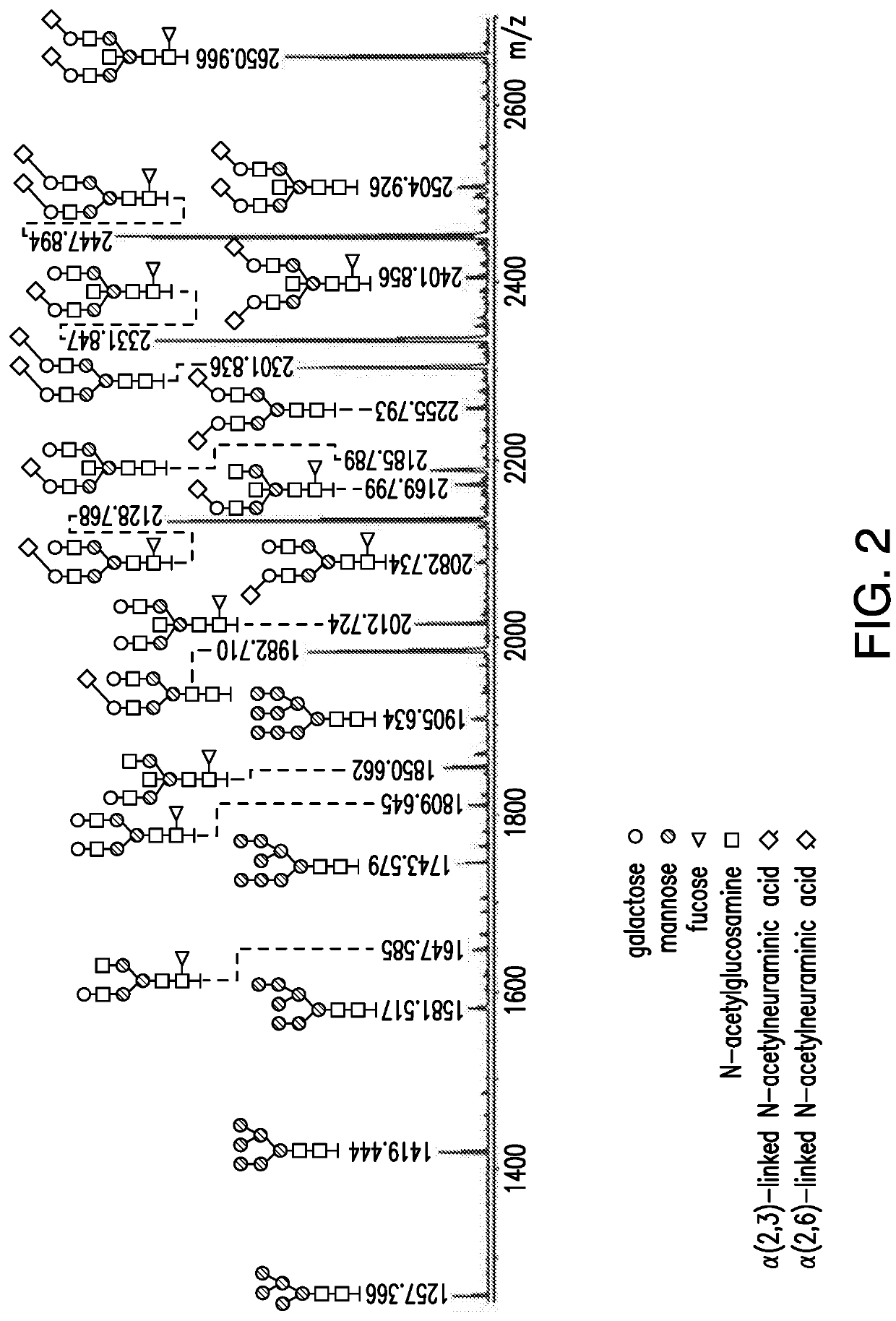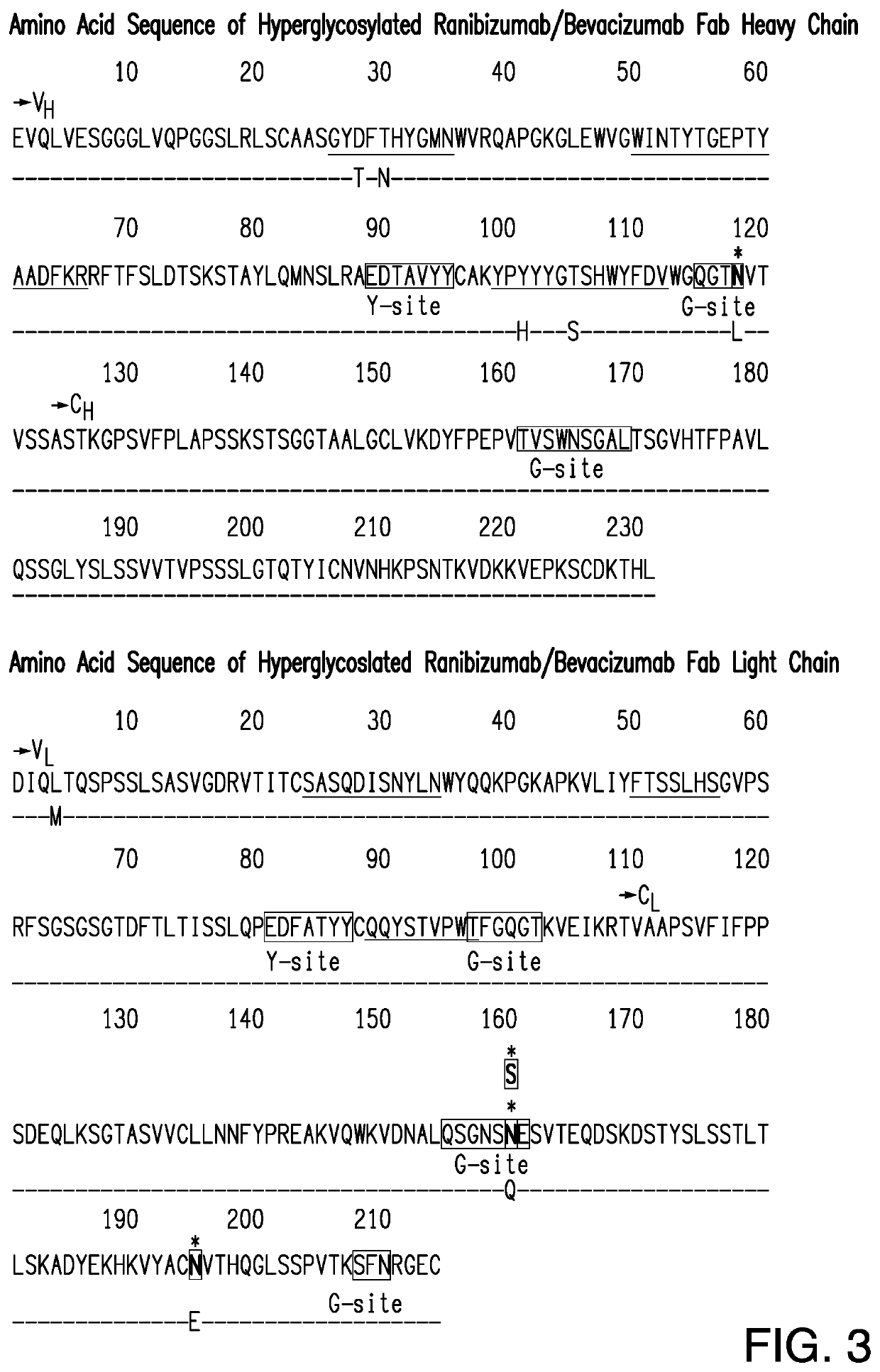TREATMENT OF OCULAR DISEASES WITH FULLY-HUMAN POST-TRANSLATIONALLY MODIFIED ANTI-VEGF Fab
- Summary
- Abstract
- Description
- Claims
- Application Information
AI Technical Summary
Benefits of technology
Problems solved by technology
Method used
Image
Examples
Embodiment Construction
3.1.1 Set 1
[0104]1. A method of treating a human subject diagnosed with wet AMD, dry AMD, retinal vein occlusion (RVO), diabetic macular edema (DME), or diabetic retinopathy (DR) (in particular, wet AMD), comprising delivering to the retina of said human subject a therapeutically effective amount of anti-hVEGF antigen-binding fragment produced by human retinal cells.
[0105]2. A method of treating a human subject diagnosed with wet AMD, dry AMD, retinal vein occlusion (RVO), diabetic macular edema (DME), or diabetic retinopathy (DR) (in particular, wet AMD), comprising delivering to the retina of said human subject a therapeutically effective amount of anti-hVEGF antigen-binding fragment produced by human retinal cells, by administering to the subretinal space in the eye of said human subject an expression vector encoding the anti-hVEGF antigen-binding fragment, by subretinal injection via the transvitreal approach or via the suprachoroidal space in the eye of said human subject.
[0106...
PUM
| Property | Measurement | Unit |
|---|---|---|
| Volume | aaaaa | aaaaa |
| Photosensitivity | aaaaa | aaaaa |
Abstract
Description
Claims
Application Information
 Login to View More
Login to View More - R&D
- Intellectual Property
- Life Sciences
- Materials
- Tech Scout
- Unparalleled Data Quality
- Higher Quality Content
- 60% Fewer Hallucinations
Browse by: Latest US Patents, China's latest patents, Technical Efficacy Thesaurus, Application Domain, Technology Topic, Popular Technical Reports.
© 2025 PatSnap. All rights reserved.Legal|Privacy policy|Modern Slavery Act Transparency Statement|Sitemap|About US| Contact US: help@patsnap.com



